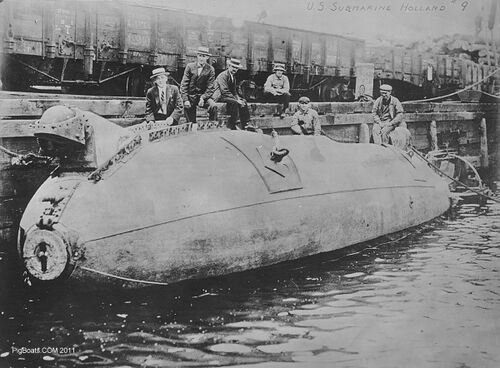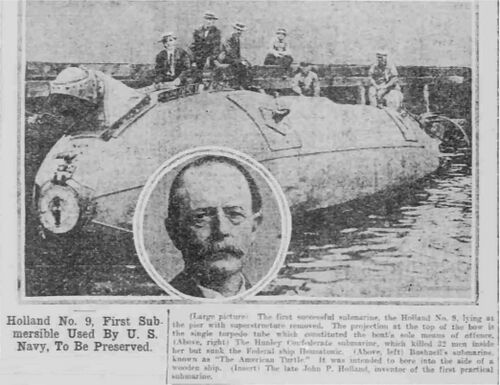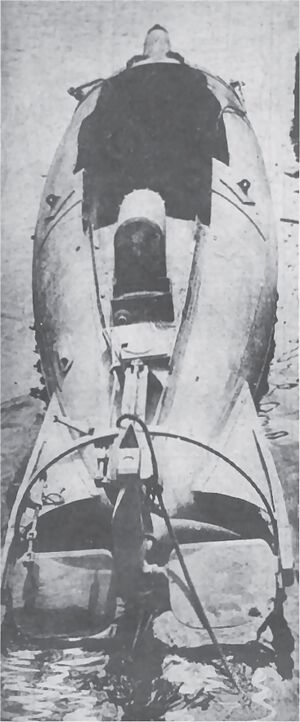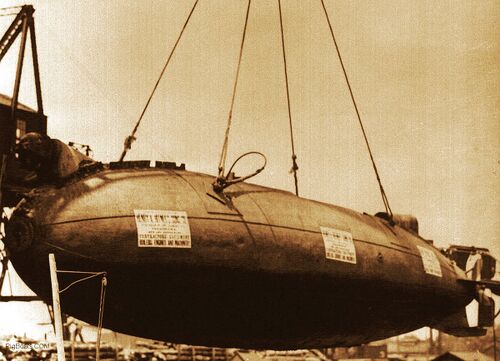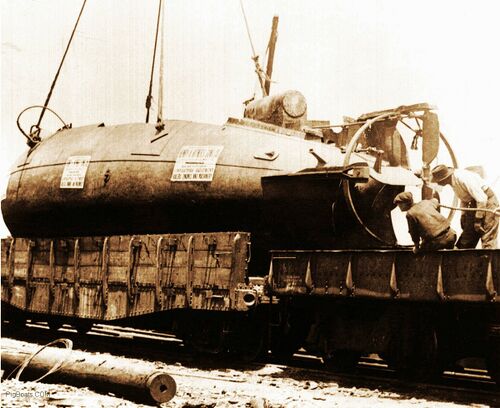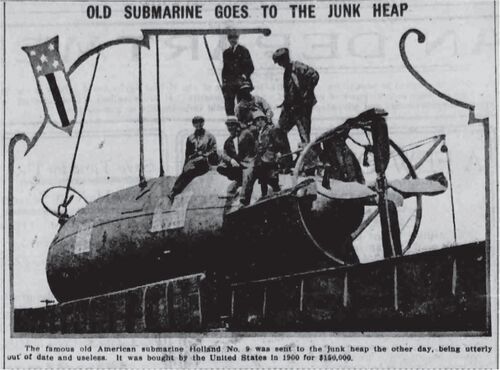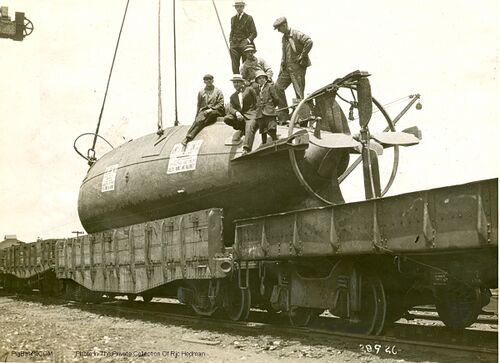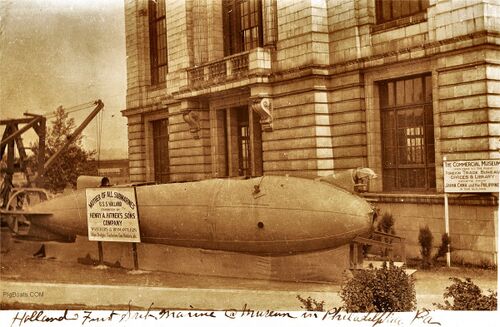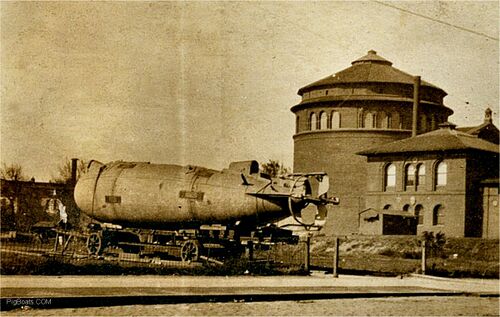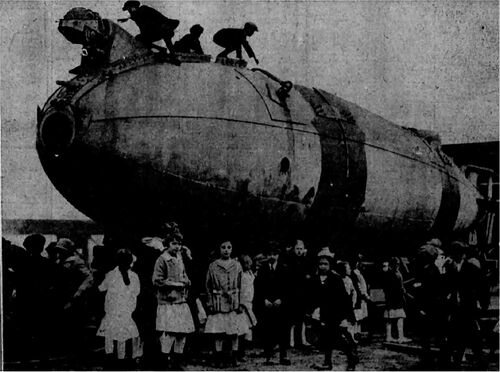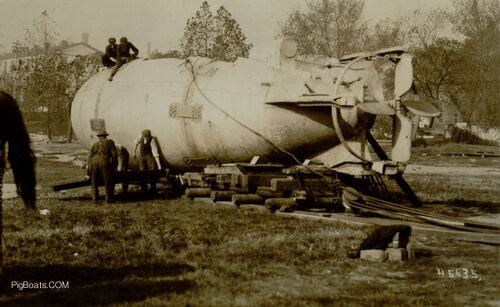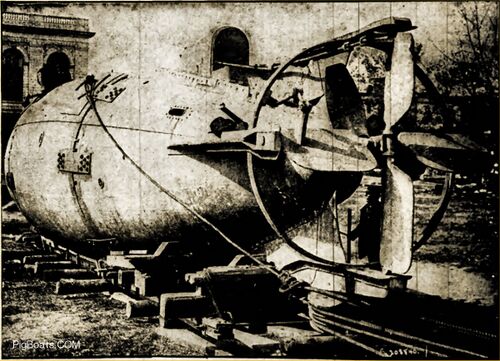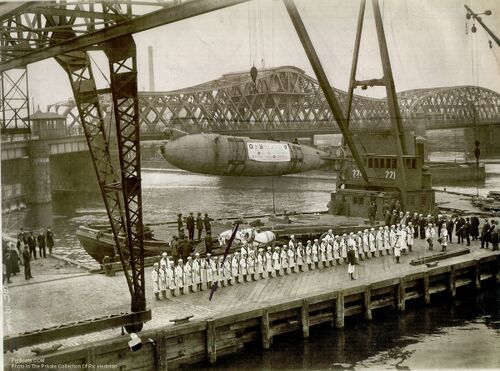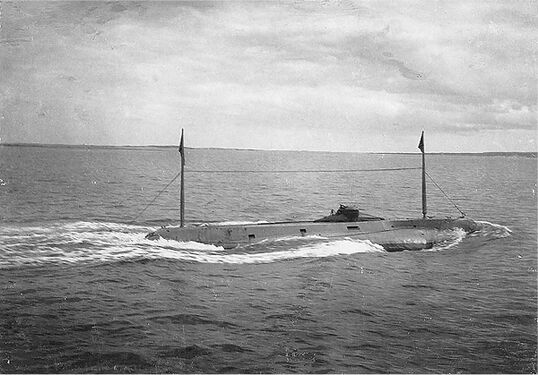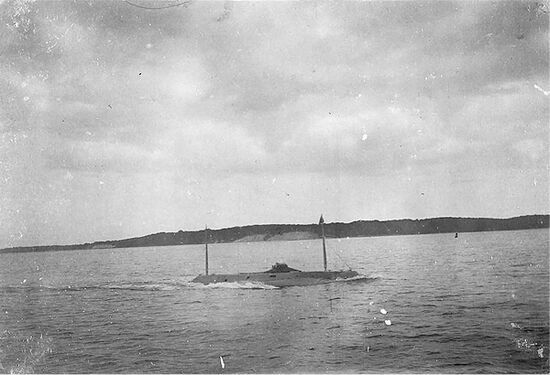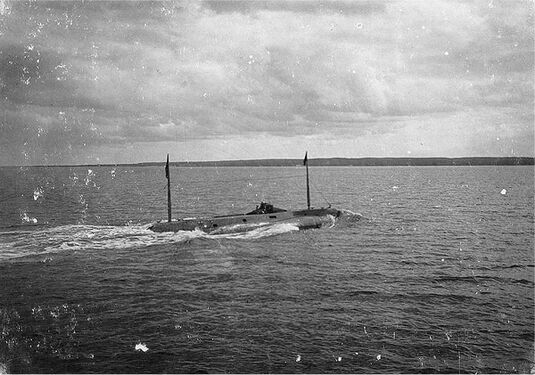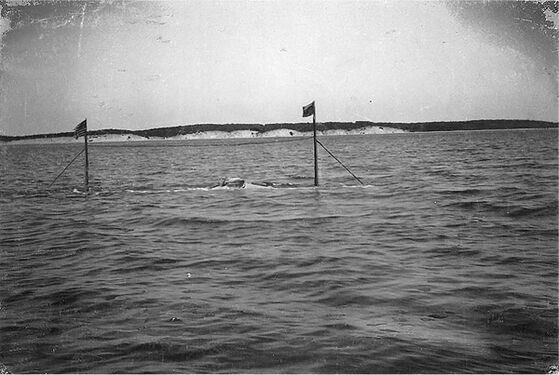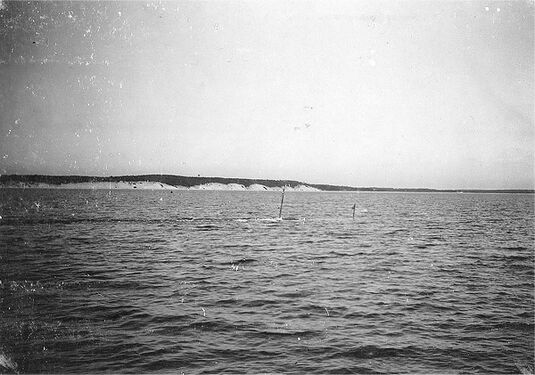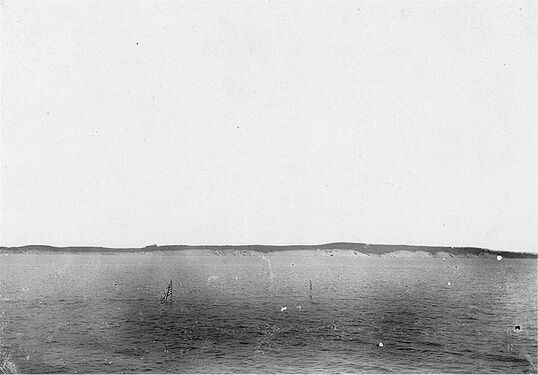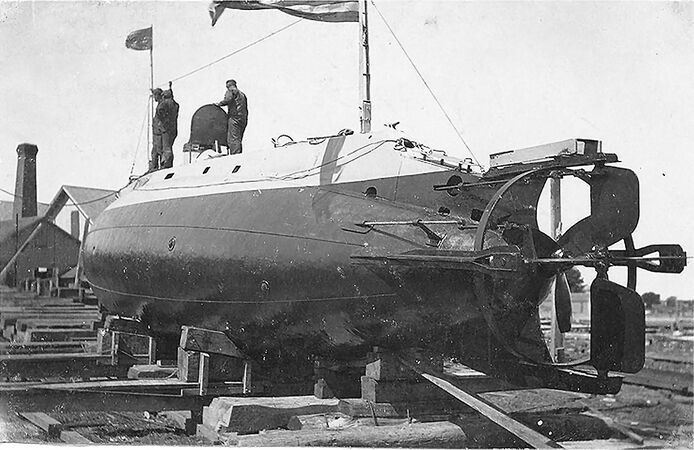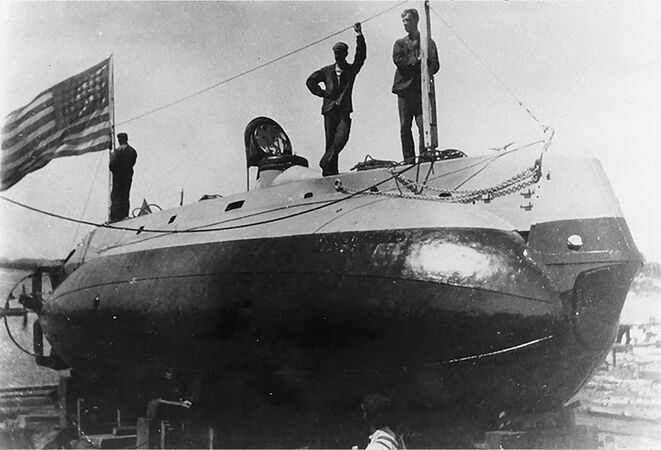Holland

Design, Construction, and Naming Notes
Holland (Submarine No. 1)
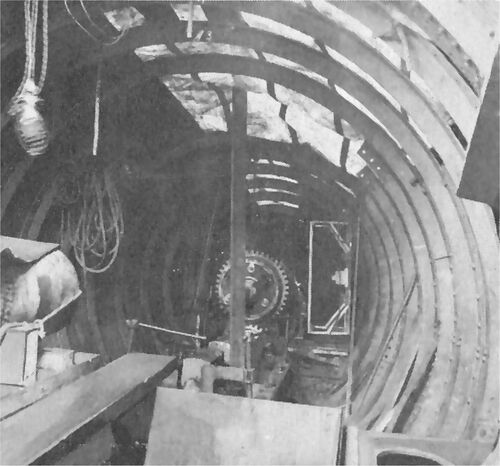
U.S. Navy Photo
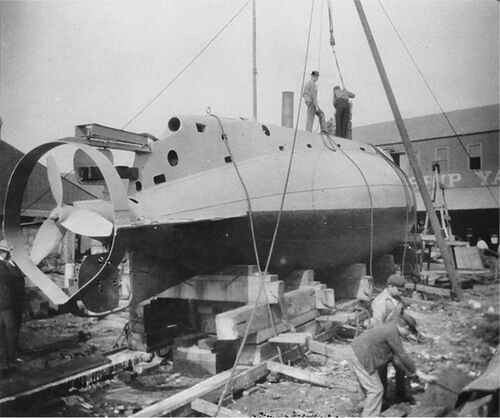
U.S. Navy Photo

U.S. Navy Photo
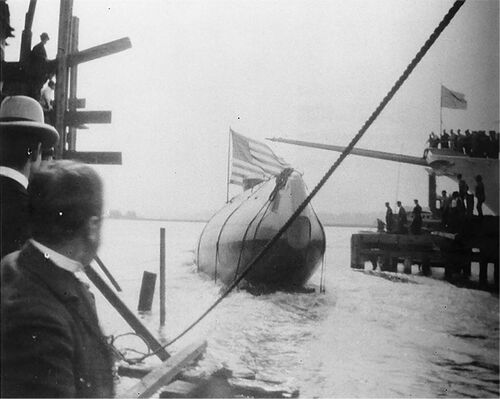
U.S. Navy Photo
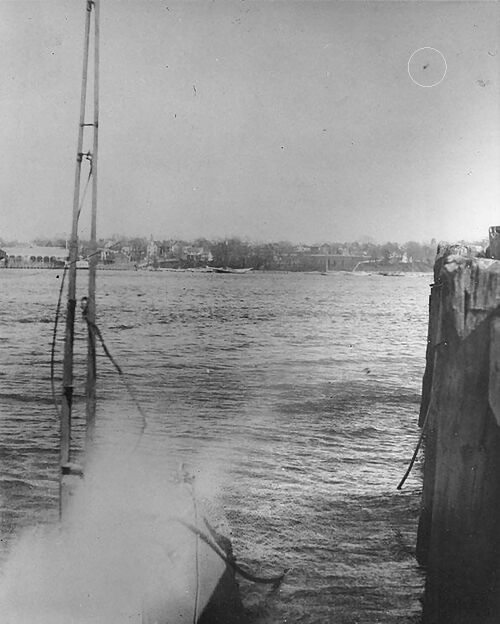
U.S. Navy Photo
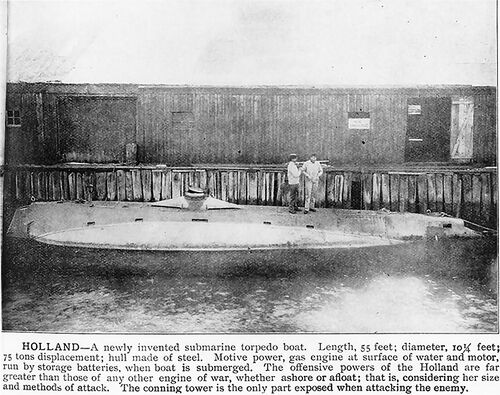
Library of Congress
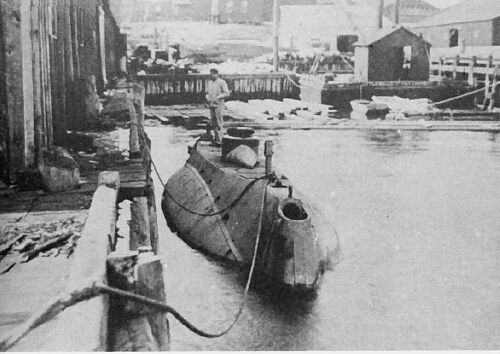
U.S. Navy Photo
The April 20, 1898 Trials
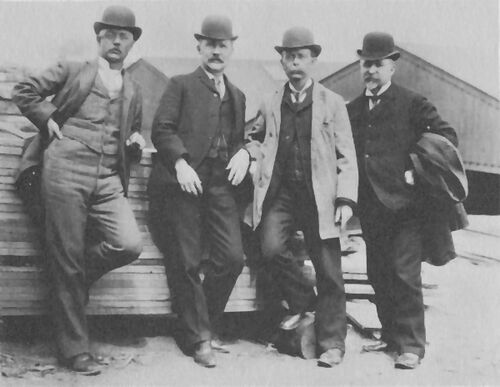
Walter Thompson, superintendent of the Raritan Dry Dock.
Charles A. Morris, superintending engineer of the John P. Holland Torpedo Boat Company.
John P. Holland, inventor of the submarine.
Mr. Matthews, an investor in the John P. Holland Torpedo Boat Company
All there to witness the first real trial run of the submarine boat Holland on Raritan Bay before a Navy Board of Inspection.
US Navy Photo
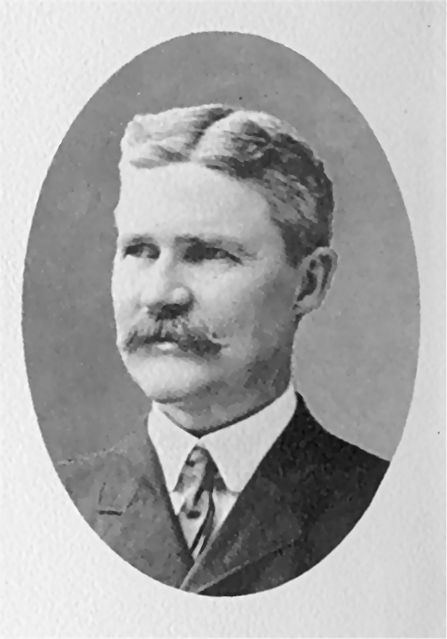
Morris Family Photo
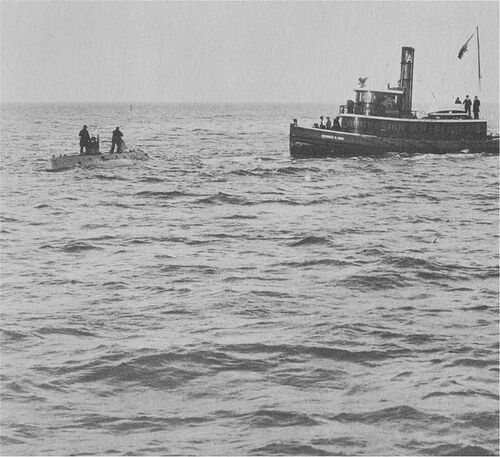
U.S. Navy Photo
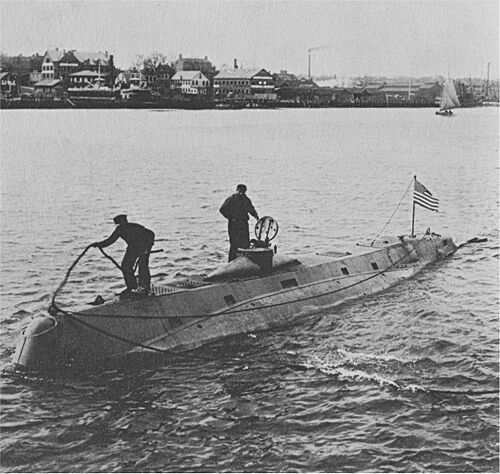
U.S. Navy Photo
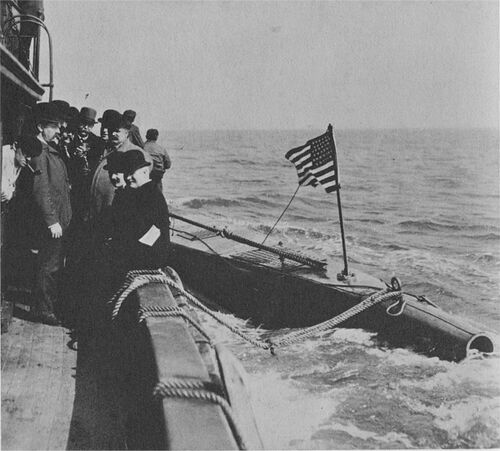
U.S. Navy Photo
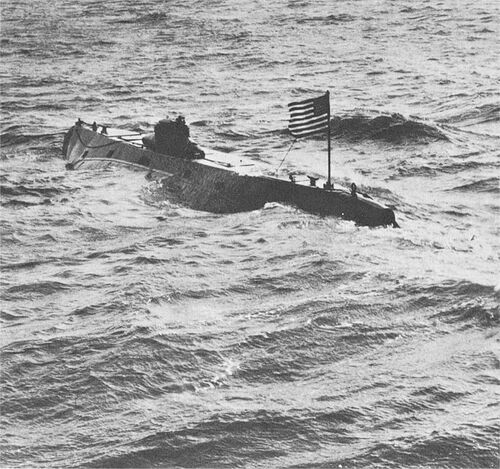
U.S. Navy Photo
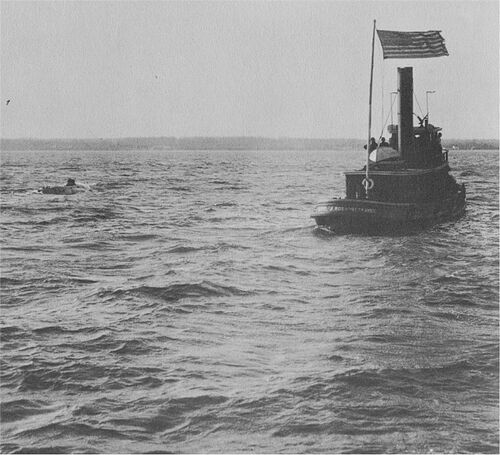
U.S. Navy Photo
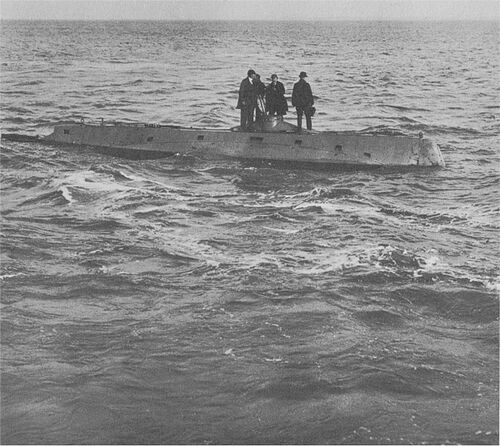
The Erie Basin Haulout
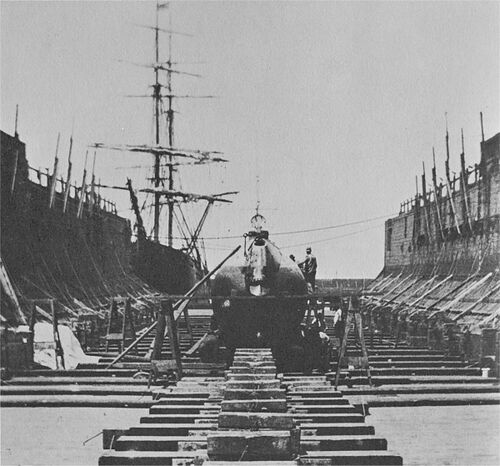
U.S. Navy Photo
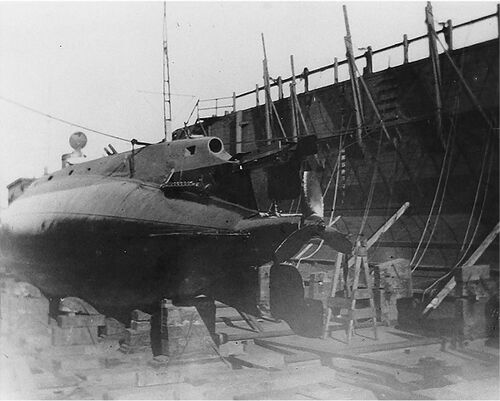
US Navy Photo
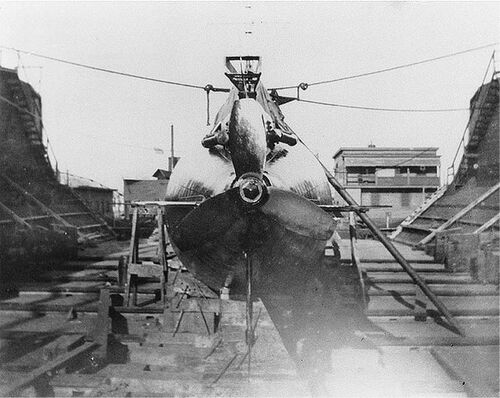
US Navy Photo
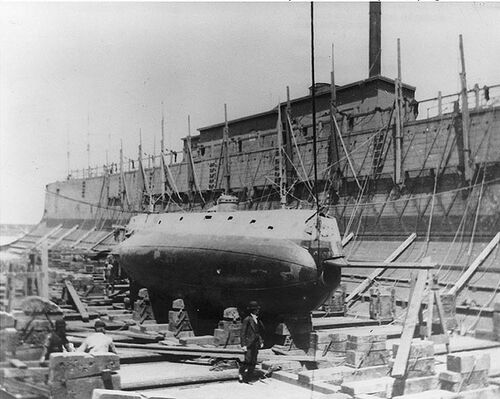
The Atlantic Yacht Basin Haulout
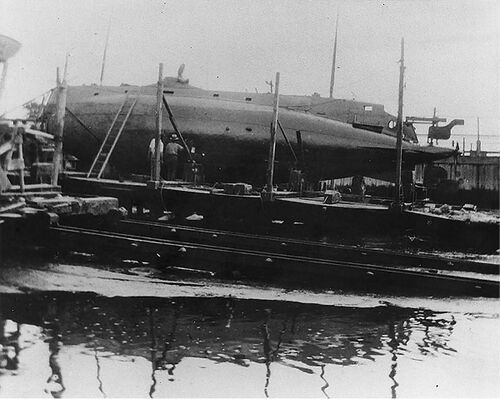
In September 1898 the Holland was hauled out at the Atlantic Basin shipyard and extensive work was done. A new smaller propeller was installed, she received a fresh paint job, and the torpedo tube was re-bored. She was ready for further testing by November 4, 1898. On the 12th of November fresh trials began. This was the first time John Holland did not handle the submarine himself.
US Navy PhotoMorris Heights Haulout
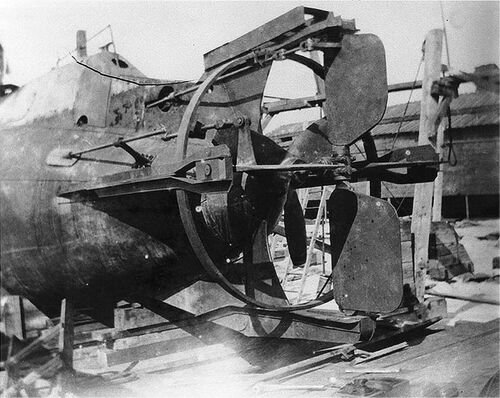
US Navy Photo
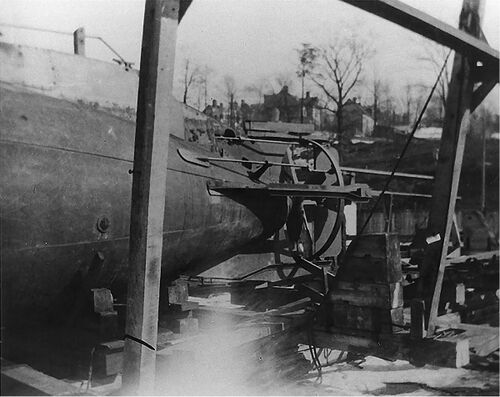
US Navy Photo

US Navy Photo
The New Suffolk Trials 1899

U.S. Navy photo
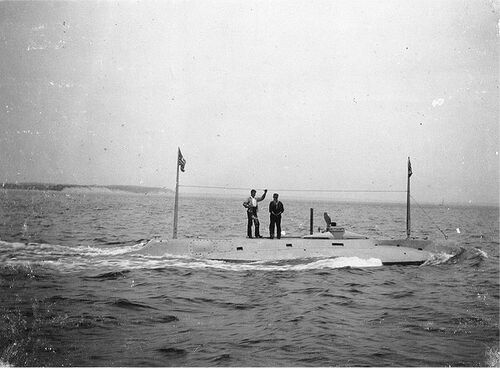
The Holland heading out on Little Peconic bay for trial runs. The course was laid out in a north-south direction parallel to Little Hog Neck and marked by flagged buoys. These photos were taken on an early July 1899 running of that course.
U.S. Navy photo
U.S. Navy photo
U.S. Navy photo

Holland heading back to New Suffolk, NY at the conclusion of the trial run in Little Peconic Bay, July 1899.
U.S. Navy photo
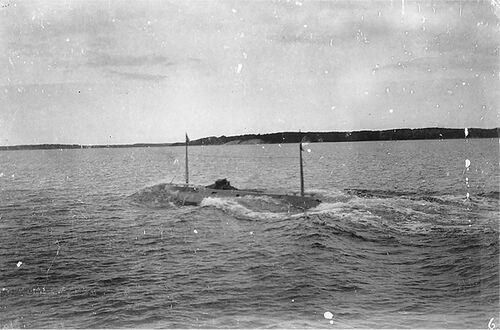
A view from the port quarter as Holland makes her way back to New Suffolk at the end of the trial run.
U.S. Navy photo
The Greenport Haulout
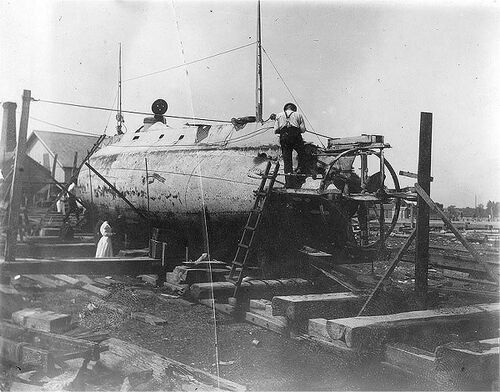
U.S. Navy photo
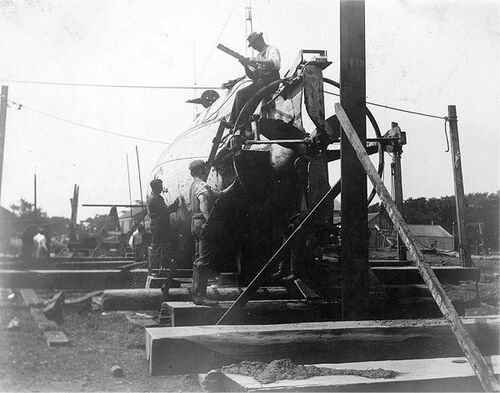
Holland hauled out at Greenport, NY., 1899. This view from the stern shows several Holland Company employees working at her stern.
U.S. Navy photo
U.S. Navy photos
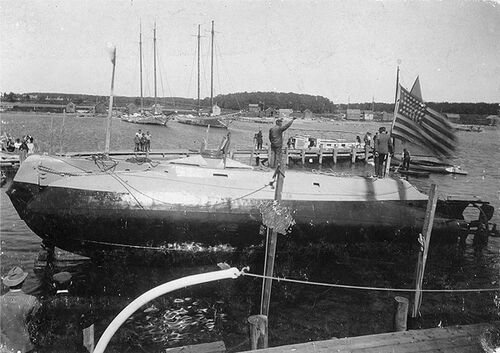
Holland carefully being put back into the water on the marine railway at Greenport, NY, late summer 1899. Different from a traditional launching, the boat was carefully winched back into the water, with the cradle she was sitting on rolling on steel tracks laid on the slip.
U.S. Navy photo
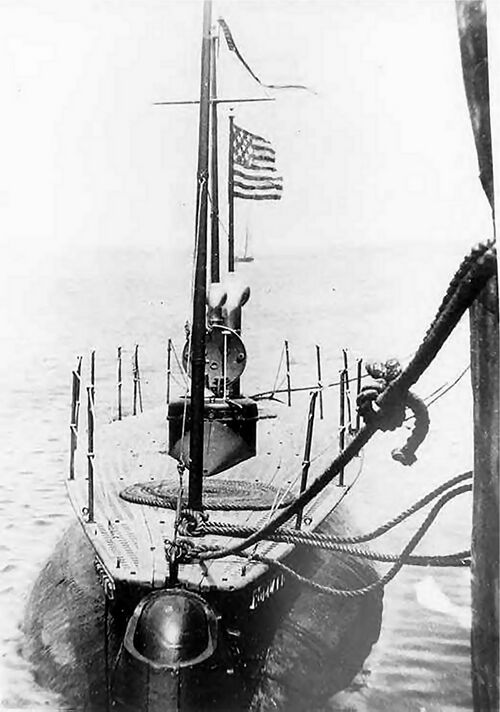
U.S. Navy photo.
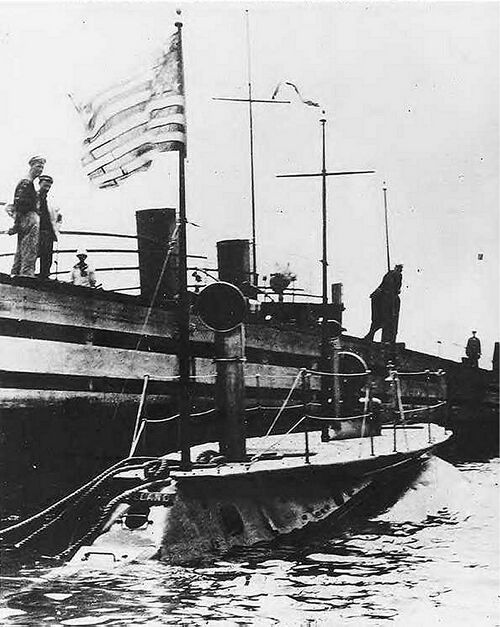
Another view of Holland and her "strutting deck", most likely at the Holland company base at New Suffolk, Long Island. Several crew are on the pier. The second man from the left appears to be Chief of the Boat, Chief Gunner's Mate William H. Reader. The other man is unknown. Moored on the other side of the pier is a motor torpedo boat. On her stern, just below her name plaque is the former opening for her after pneumatic gun that was removed prior to acceptance by the Navy. A hand hold has been placed over the opening.
U.S. Navy photo.
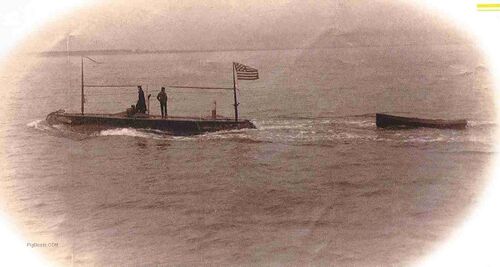
USS Holland underway, based on the background formation, on what seems to be Little Peconic Bay, Long Island, near New Suffolk, late 1900. Several men are topside and the head of the man steering is just seen sticking through the hatch. She is seen towing a skiff that is seen in some other photos. Her commissioning pennant is flying from her foremast and there seems to be a ventilator over the engine area to help air flow to the engine. The two "poles" seen attached to the masts are not booms but boat hooks to assist in coming along side docks and other vessels.
U.S. Navy photo.
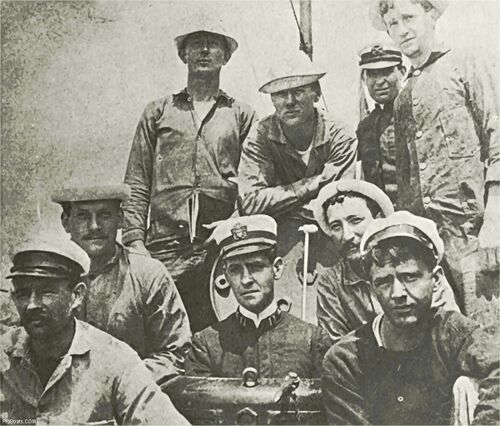
This is the crew of USS Holland, and the first U.S. Navy crew assigned to a submarine. These were brave men operating a futuristic machine on a new frontier. They were pathfinders in the truest sense of that word.
In the center of the picture is Lieutenant Harry H. Caldwell, Commanding Officer (who bears a striking resemblance to actor Gabriel Byrne). Starting at the lower left of the picture and going clockwise are:
•William H. Reader, Chief Gunner's Mate
•Augustus Gumpert, Gunner's Mate
•Harry Wahab, Gunner's Mate 1st Class
•O. Swanson, Gunner's Mate 1st Class
•Owen Hill, Gunner (Warrant Officer)
•Walter A. Hall, Electrician's Mate 2nd Class
•Arthur Callahan, Gunner's Mate 2nd Class
•Barnett Bowie, Chief Machinist's Mate
U.S. Navy photo.
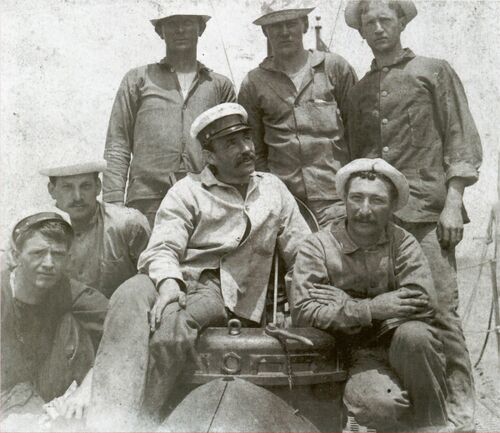
In the U.S. Navy Submarine Service, the Chief of the Boat (COB) is an experienced and wise Chief Petty Officer and the senior enlisted man aboard. He is the principal enlisted advisor to the commanding officer, and is the CO's "get it done man". Not only is he a subject matter expert on all things submarine, but he also keeps the enlisted men moving forward, sometimes with sharp and pointed words, sometimes with a grandfatherly pat on the back and wise insight. This photo highlights the force's very first COB, Chief Gunner's Mate William H. Reader, USN (center). Arrayed around him are the remainder of the Holland's first enlisted crew, the same men in the photo above.
U.S. Navy photo.
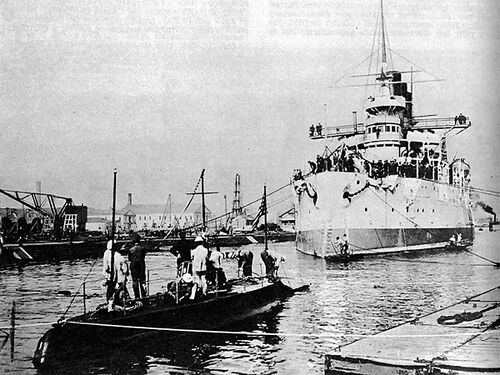
The Holland entering dry dock at the Brooklyn Navy Yard in New York City, October, 1901. She is sharing the dry dock with the Russian battleship Retvizan. The Russian battleship was undergoing a refit prior to heading to join the Russian Pacific fleet at Port Arthur (present day Lushunkou, China). Retvizan had been built for the Imperial Russian Navy by the United States. Retvizan was torpedoed and heavily damaged prior to the famous Battle of Tsushima Straight in the Russo-Japanese War. But she was repaired in time to participate in the battle. She survived and was eventually taken over by the Japanese and renamed Hizen. She served Japan until being sunk as a gunnery target in 1924.
U.S. Navy photo.
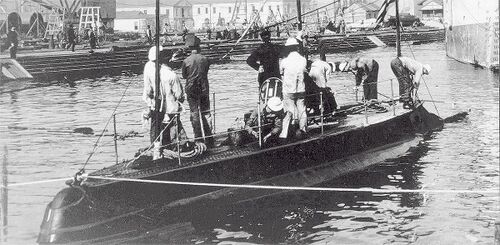
A high resolution closeup of Holland from the above photo. The bow is facing the camera. Her crew is all topside, working to ensure the lines are ready to steady the boat when the dock pumping begins.
U.S. Navy photo.
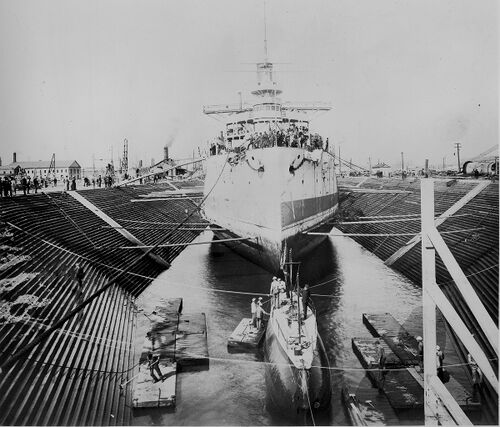
Another view of Holland and Retvizan during the 1901 Brooklyn Navy Yard drydocking. In this photo the water is nearly drained and both ships are sitting firmly on the keel blocks at the bottom of the dock. LT Caldwell can be seen on Holland's deck, carefully monitoring the draining of the water.
U.S. Navy photo.
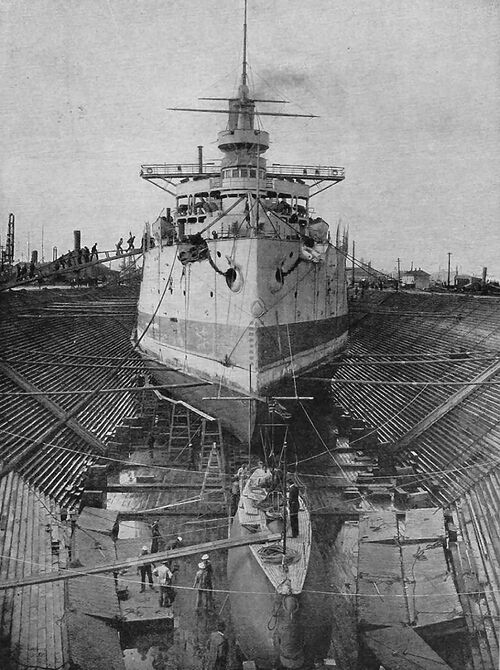
This photo was taken several minutes after the one above, and shows the dock drained. An access gangplank has been placed to provide a means of getting to the Holland. Time would not be wasted and the men would get to work immediately.
U.S. Navy photo.
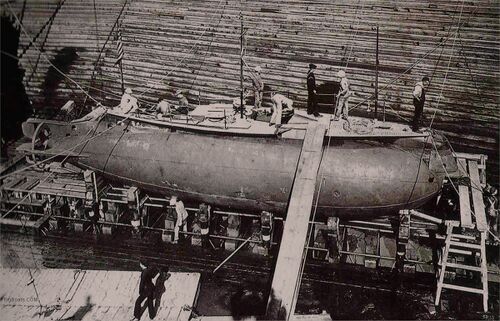
Another view of Holland during the 1901 drydocking. This shot gives a good view of her hull shape, a beautifully tapered cylinder. The Navy would quickly diverge from this hydrodynamically optimal shape, but would return to it in the 1960's and the Skipjack-class nuclear submarines with their "Albacore" style hulls.
U.S. Navy photo.
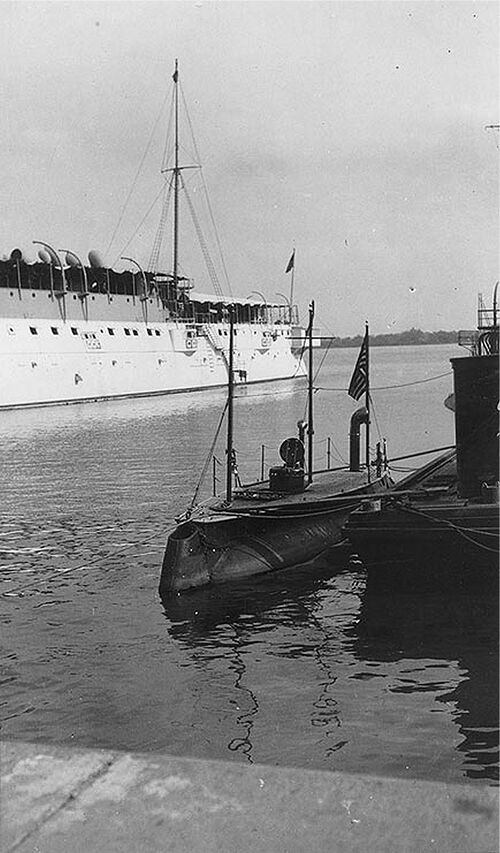
The diminutive Holland moored at the Philadelphia Navy Yard in 1901. USS Columbia (Cruiser No. 12) is partially visible in the background. The muzzle door for Holland's pneumatic gun is open. Theoretically, the gun was capable of launching it's dynamite shells while the boat was submerged, making the Holland the first submarine capable of launching a ballistic missile while submerged! While there is only anecdotal evidence to show that she actually did launch a projectile while submerged, she was certainly capable of doing so.
U.S. Navy photo.
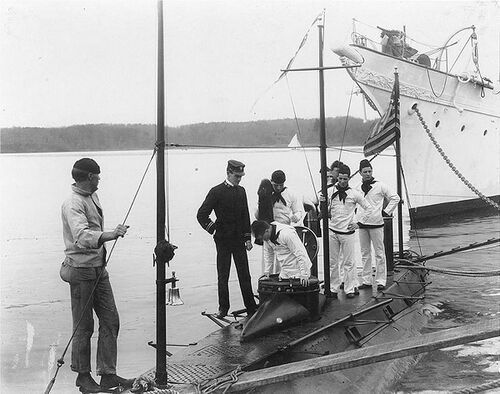
At the U.S. Naval Academy, Annapolis, Maryland, circa 1901-1902, with several midshipmen on board. Among the midshipmen are, as identified from names on their uniforms:
•Naval Cadet Henry G.S. Wallace (entering conning tower)
•Naval Cadet John W. Woodruff (behind Wallace)
•Naval Cadet John. H. Blackburn (by the mast) and
•Naval Cadet William J. Moses (in front of the flag).
The careful method that Wallace is using to go down the hatch emphasizes the boat's small size and the fact that you did not enter the Holland, you put it on.
The officer standing by the conning tower is probably Holland's Commanding Officer, Lieutenant Harry H. Caldwell. Note Holland's bell mounted on her foremast, commissioning pennant flying from the top of her mainmast, outriggers fixed along her deck edge for decking that has been removed and the bow of the converted yacht USS Gloucester in the right background.
U.S. Navy photo.
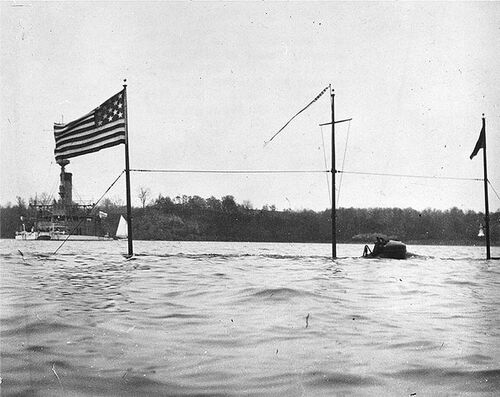
Holland partially submerged in the Severn River off the U.S. Naval Academy, Annapolis, Maryland, in the summer of 1901. Maybe with cadets aboard as riders. Note the submarine's 13-star "boat" flag, signal mast fitted amidships and commissioning pennant. A large coastal monitor, possibly an Amphitrite-class vessel, is in the left background.
U.S. Navy photo.
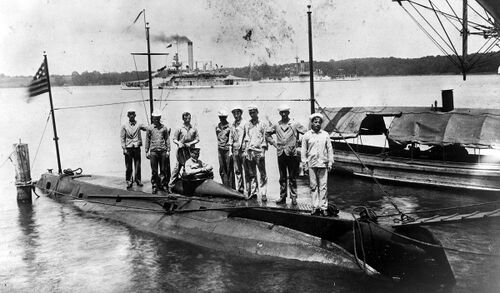
Holland and her crew posing for a portrait while stationed at the Naval Academy circa 1903-1904. Two monitors are anchored in the background, a steam launch is moored alongside as a comparison for size. The left hand monitor is an Arkansas-class vessel, and the other is of the Amphitrite-class.
U.S. Navy photo.
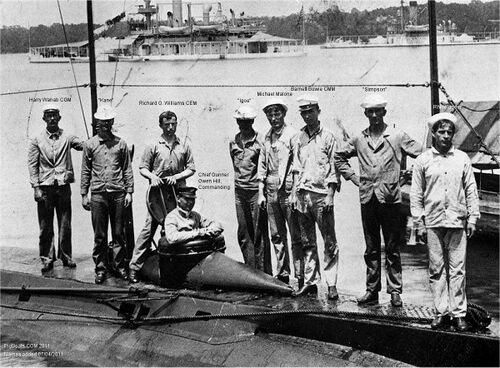

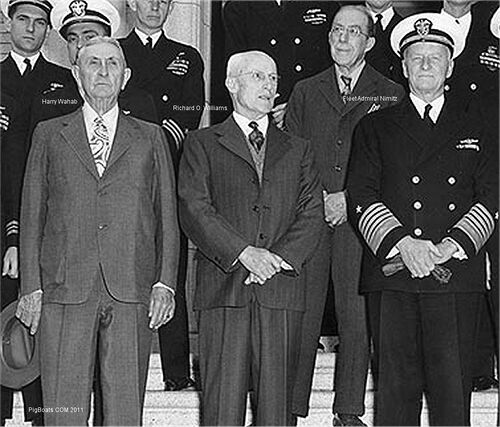
The End of her Service

